Note: Director Nicholas Winding Refn was WINNER of the Cannes Film Festival Best Director Award in 2011 for this film.
“This night is not for those men who still live in that black shadow…”
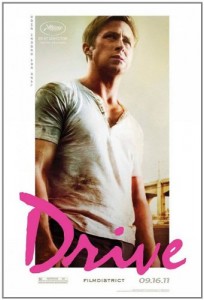 As a woman sings these ironic lyrics from “Real Heroes” to a throbbing bass, Driver, the main character of the film version of James Sallis’s novel Drive, faces the final scenes in this stunning film. And it is definitely stunning—both in its good sense of remarkable and exciting and in its lesser sense of violent and horrifying. This is the most brutal film I have ever seen, and though the novel was violent, too, the reader could, at least, control how much mayhem s/he would deal with by skimming through the worst and refusing to imagine the reality of the gore. It is dramatically worse to have that gore splattering in your face in living color.
As a woman sings these ironic lyrics from “Real Heroes” to a throbbing bass, Driver, the main character of the film version of James Sallis’s novel Drive, faces the final scenes in this stunning film. And it is definitely stunning—both in its good sense of remarkable and exciting and in its lesser sense of violent and horrifying. This is the most brutal film I have ever seen, and though the novel was violent, too, the reader could, at least, control how much mayhem s/he would deal with by skimming through the worst and refusing to imagine the reality of the gore. It is dramatically worse to have that gore splattering in your face in living color.
Having said that, however, it is also a film very well worth seeing for those with the fortitude to deal with the darkness and graphic cruelty. Nicolas Refn, a Dane who won the Cannes Film Festival Award as Best Director for this film, creates a tight and spine-tingling drama of a character known only as Driver (Ryan Gosling), a young man who works as a Hollywood stunt driver by day and as the driver of getaway cars at night. A man who is emotionally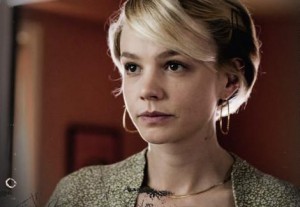 scarred from some unspecified trauma in the past, Driver is cold, unflappable – just what a career criminal wants in his getaway driver. Opening with a robbery scene followed by a high octane chase scene, as Driver and two robbers avoid the police and two helicopters, the film then shows Driver returning to his almost bare apartment and meeting pretty Irene (Carey Mulligan) in the hallway. Irene is vulnerable and charming, the mother of a young boy, whose husband is in prison for having run afoul of gangsters to whom he is in debt, with the debt contining to rise exponentially. Eventually, Driver decides to help both Irene and her husband get clear of the mob, but soon the mob is pursuing Driver, with Irene and her child being used as the trump cards if Driver does not cooperate.
scarred from some unspecified trauma in the past, Driver is cold, unflappable – just what a career criminal wants in his getaway driver. Opening with a robbery scene followed by a high octane chase scene, as Driver and two robbers avoid the police and two helicopters, the film then shows Driver returning to his almost bare apartment and meeting pretty Irene (Carey Mulligan) in the hallway. Irene is vulnerable and charming, the mother of a young boy, whose husband is in prison for having run afoul of gangsters to whom he is in debt, with the debt contining to rise exponentially. Eventually, Driver decides to help both Irene and her husband get clear of the mob, but soon the mob is pursuing Driver, with Irene and her child being used as the trump cards if Driver does not cooperate.
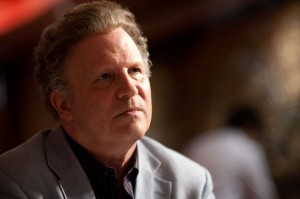 Dramatic scenes, chases, shootings, and all kinds of mayhem follow, but as the film develops, the viewer comes to see that Driver has his own bizarre sense of ethics, and a real desire to help Benicio, Irene’s young son. Driver, however, has no idea how to communicate in words and the first fifteen minutes of the film consist of action without a single word spoken by Driver. Scenes between Driver and Irene are also nearly silent – Driver reflects his interest in her with his eyes and facial expressions and Irene is shy – and married. Yet Driver also has a strong streak of uncontrolled violence, which breaks out occasionally, most notably toward Blanche (Christina Hendricks), a woman hired as a lookout during a robbery; Bernie Rose (Albert Brooks), a career criminal who needs Driver; and Nino (Ron Perlman), a thug with connections to the Philadelphia mob.
Dramatic scenes, chases, shootings, and all kinds of mayhem follow, but as the film develops, the viewer comes to see that Driver has his own bizarre sense of ethics, and a real desire to help Benicio, Irene’s young son. Driver, however, has no idea how to communicate in words and the first fifteen minutes of the film consist of action without a single word spoken by Driver. Scenes between Driver and Irene are also nearly silent – Driver reflects his interest in her with his eyes and facial expressions and Irene is shy – and married. Yet Driver also has a strong streak of uncontrolled violence, which breaks out occasionally, most notably toward Blanche (Christina Hendricks), a woman hired as a lookout during a robbery; Bernie Rose (Albert Brooks), a career criminal who needs Driver; and Nino (Ron Perlman), a thug with connections to the Philadelphia mob.
The film is quite different from the novel in that it is much more simplistic. The characters really are what the reader sees, yet in the novel, Driver spends much time thinking about his childhood, about the movie scenes in which he has had roles, and about his life and how he got where he is now, none of which are developed here. The novel is non-linear, with scenes from different time periods blending together as Driver acts, leading the book to achieve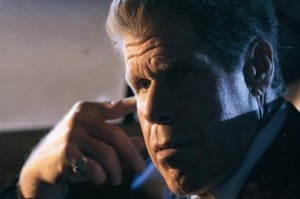 a level of complexity and insight into personality which is missing in the film, a much more straightforward enterprise. Ryan Gosling is receiving much-deserved praise for his role as Driver, as he conveys both a subtle vulnerability and a hidden strain of violence just looking for an excuse to explode. Veteran actors Albert Brooks and Ron Perlman are suitably frightening criminals, with Perlman also reflecting a kind of blind stupidity which makes his sudden violence even more terrifying.
a level of complexity and insight into personality which is missing in the film, a much more straightforward enterprise. Ryan Gosling is receiving much-deserved praise for his role as Driver, as he conveys both a subtle vulnerability and a hidden strain of violence just looking for an excuse to explode. Veteran actors Albert Brooks and Ron Perlman are suitably frightening criminals, with Perlman also reflecting a kind of blind stupidity which makes his sudden violence even more terrifying.
Carey Mulligan, as Irene, is lovely, but that creates a bit of a problem in terms of her believability. Though she does everything right, in terms of her acting, and cannot be faulted for the way she plays the role, she does not really look the part. A waitress who, at seventeen, married a man who would spend significant time in prison, Mulligan appears to be an innocent ingénue, not someone with the toughness she would need for her hard job as a waitress in a diner supporting her young son and dealing with her husband’s incarceration. (I was interested to discover that Carey Mulligan has previously played major roles in the film of Pride and Prejudice and the BBC’s production of Dickens’s Bleak House, both roles which would seem to fit her perfectly.)
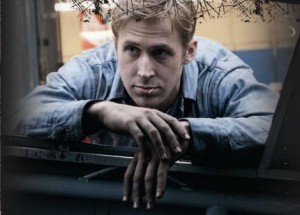 Drive is a dark and violent but complex literary novel. As a film, it is also violent but far more earthbound, with few subtleties except in Gosling’s acting. Author James Sallis indicates in an LA Times interview that he is already working on a sequel. It will be interesting to see if the sequel has the same literary qualities as the novel of Drive, or whether it will be written more for its visual impact. He has said (in the same LA Times interview) that “What I tell my students is you need to leave space. You need to let the story breathe. Don’t overexplain. Let the reader join in the story.” Sallis is so talented that perhaps he will succeed in having it both ways, but action films like this one seem by their nature to depend on visual “overexplaining” for effect, leaving the reader little space and less time to breathe. If there is a sequel, it will be interesting to see if some sort of collaboration between director and writer takes place leading to a different kind of film.
Drive is a dark and violent but complex literary novel. As a film, it is also violent but far more earthbound, with few subtleties except in Gosling’s acting. Author James Sallis indicates in an LA Times interview that he is already working on a sequel. It will be interesting to see if the sequel has the same literary qualities as the novel of Drive, or whether it will be written more for its visual impact. He has said (in the same LA Times interview) that “What I tell my students is you need to leave space. You need to let the story breathe. Don’t overexplain. Let the reader join in the story.” Sallis is so talented that perhaps he will succeed in having it both ways, but action films like this one seem by their nature to depend on visual “overexplaining” for effect, leaving the reader little space and less time to breathe. If there is a sequel, it will be interesting to see if some sort of collaboration between director and writer takes place leading to a different kind of film.
NOTE: The review of James Sallis’s book may be seen here: James Sallis: DRIVE
Photos, in order: The poster for the film is from http://www.amazon.com
Carrie Mulligan’s photo is here: http://www.okmagazine.com
Albert Brooks is from: http://www.aceshowbiz.com
Ron Perlman appears here: http://www.okmagazine.com
Ryan Gosling appears here: http://www.okmagazine.com
